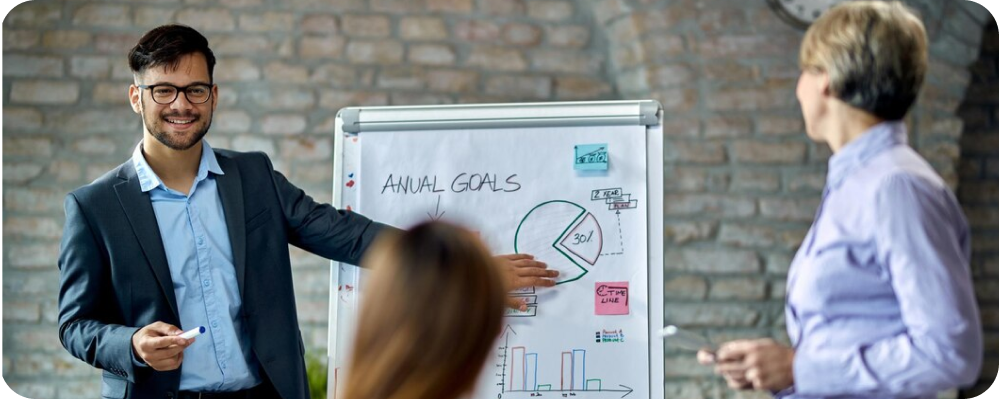Introduction:
In the era of Agile methodologies, the Scaled Agile Framework (SAFe®) stands out as a strong and comprehensive system designed to handle the complexities of large-scale Agile projects. Among the various certifications offered within the SAFe® framework, the Certified SAFe® Agilist and Certified SAFe® Practitioner are two prominent Professional Certifications that cater to different organizational roles and responsibilities. Understanding the distinctions between these two certifications is important for professionals looking to advance their careers in Agile practices.
Before developing into the specifics of the SAFe Agilist and SAFe® Practitioner certifications, it is essential to have a foundational understanding of SAFe. SAFe® is a framework that allows enterprises to adopt Agile practices at scale. It integrates principles from Lean, Agile, and DevOps to provide a comprehensive approach to delivering value quickly and sustainably. SAFe® is designed to align development with business goals, improve product quality, and enhance productivity across teams and departments.
Certified SAFe® Agilist (SA)
Overview: TheCertified SAFe Agilist(SA) Certification is targeted at executives, managers and Agile Change agents who are responsible for Leading a Lean-Agile transformation within an enterprise. The SA Certification provides an understanding of the Lean-Agile mindset and the principles and practices of SAFe.
Key Learning Objectives:
- Implementing and leading SAFe® transformations.
- Understanding the Lean-Agile mindset.
- Applying SAFe® principles to align development with business goals.
- Leading Agile Release Trains (ARTs) and coordinating multiple Agile teams.
- Fostering continuous improvement within the organization.
Who Should Attend: This Certification is ideal for senior managers, directors, executives, and others who play a critical role in their organization's Agile transformation organization certification.
SAFe® Practitioner (SP)
Overview: The Certified SAFe® Practitioner (SP) certification is designed for team members who operate within an Agile Release Train (ART). This Certification focuses on providing team members with the skills needed to work effectively in a SAFe® environment and contribute to the success of the ART.
Key Learning Objectives:
- Understanding the SAFe® framework and its components.
- Collaborating with other teams in the ART.
- Planning and executing iterations and Program Increments (PIs).
- Building and delivering high-quality solutions.
- Participating in continuous improvement efforts.
Who Should Attend:
This Certification is Particularly Suitable for all team members within an ART, including developers, testers, product owners, Scrum Masters, and other roles that contribute to the delivery of value.
Key Differences Between Certified SAFe® Agilist and Certified SAFe® Practitioner
The following table provides a clear comparison between the SAFe® Agilist and Certified SAFe® Practitioner certifications, highlighting the key differences in terms of focus, target audience, learning objectives, and responsibilities:
| Aspect | Release Train Engineer (RTE) | Project Manager |
| Framework | Scaled Agile Framework (SAFe) | Various (Waterfall, Agile, Hybrid, etc.) |
| Primary Focus | Coordinating Agile Release Train (ART) | Overseeing project planning, execution, and closing |
| Key Responsibilities | Facilitate ART events, ensure team alignment, drive continuous improvement, track metrics, mitigate risks | Develop project plans, oversee execution, monitor progress, communicate with stakeholders, manage risks |
| Scope and Scale | Higher level, coordinating multiple agile teams | Can manage single or multiple projects |
| Methodology | Agile (specifically SAFe) | Versatile (traditional, agile, hybrid) |
| Event Facilitation | Heavily involved in agile ceremonies (e.g., PI Planning, System Demos) | Involvement varies based on methodology |
| Improvement Focus | Continuous process improvement within agile framework | Project-specific improvement, often outcome-focused |
| Communication | Coordinates within ART and across the organization | Primary point of contact for project stakeholders |
| Metrics and Reporting | Tracks ART performance metrics | Monitors project progress against milestones |
| Risk Management | Identifies and mitigates risks impacting ART | Identifies and mitigates project risks |
1. Focus:
Certified SAFe® Agilist (SA): The primary focus is on leading and implementing Lean-Agile transformations across the enterprise. This involves understanding the SAFe® framework deeply, aligning development work with strategic business goals, and fostering a culture of continuous improvement.
Certified SAFe® Practitioner (SP): The focus is team-level execution within an Agile Release Train. Safe Practice is concerned with the day-to-day activities of Agile teams, ensuring that iterations and PIs are planned and executed effectively to deliver high-quality solutions.
2. Target Audience:
Certified SAFe® Agilist (SA): This Certification is aimed at those in leadership positions with the authority and responsibility to drive change across the organization including executives, managers, and Agile change agents who play a pivotal role in guiding and sustaining the Lean-Agile transformation.
Certified SAFe® Practitioner (SP): SAFe Practitioner certification is designed for individuals who are part of the Agile teams within an ART. This includes developers, testers, product owners, and other roles that are directly involved in the creation and delivery of products and solutions.
3. Learning Objectives:
Certified SAFe® Agilist (SA): Key learning objectives include understanding the Lean-Agile mindset, applying SAFe principles, leading ARTs, and promoting continuous improvement. The Certification equips leaders with the knowledge to guide the organization through its Lean-Agile journey.
Certified SAFe® Practitioner (SP): For SAFe Practitioner, the learning objectives focus on understanding the SAFe framework, collaborating within ARTs, planning and executing iterations and PIs, and delivering high-quality solutions. The goal is to ensure that team members are effective contributors to the ART's success.
4. Role in SAFe:
Certified SAFe® Agilist (SA): SAFe Agilist plays a strategic role in SAFe by aligning development work with business objectives, leading ARTs, and ensuring that the orgaorganizationeres to Lean-Agile principles. They are responsible for driving change and ensuring that the entire orgaorganizationefits from the Lean-Agile transformation.
Certified SAFe® Practitioner (SP): SAFe® Practitioner has a more tactical role, focusing on the execution of tasks within an Agile team. They collaborate with other team members and ARTs to ensure that iterations and PIs are planned and executed effectively, contributing to the overall success of the ART.
5. Skills Acquired:
Certified SAFe® Agilist (SA): SAFe® Agilist acquire skills related to the Lean-Agile mindset, leadership of Lean-Agile transformations, strategic alignment of business and development goals, and fostering a culture of continuous improvement. These skills are essential for driving organizational change and ensuring that the Lean-Agile transformation is successful.
Certified SAFe® Practitioner (SP): SAFe® Practitioner gains skills in team collaboration, iterative planning, and solution delivery. These skills enable them to work effectively within Agile teams and ARTs, ensuring that high-quality solutions are delivered and that continuous improvement is practised at the team level.
6. Responsibilities:
Certified SAFe® Agilist (SA): The responsibilities of an SAFe® Agilist include driving the Lean-Agile transformation, leading ARTs, aligning development with business goals, and promoting continuous improvement. This Certification ensures that the organization is moving in the right direction and that the Lean-Agile principles are being followed.
Certified SAFe® Practitioner (SP): SAFe® Practitioners are responsible for contributing to PI planning, executing iterations, and delivering high-quality solutions. They work closely with other team members and ARTs to ensure that the development process is smooth and that the team is delivering value effectively.
Benefits of Becoming a Certified SAFe® Agilist
Becoming a Certified SAFe® Agilist offers several benefits. It positions you as a leader inAgile transformations, capable of driving change at an enterprise level. You will gain a deep understanding of Lean-Agile principles and how to apply them strategically to achieve business objectives.
SAFe Certification enhances your career prospects. OrgaOrganizationsue professionals who can lead Agile initiatives and ensure successful implementations. As a Certified SAFe® Agilist, you can pursue roles such as Agile Coach,Release Train Engineer, or SAFe Practice Consultant, which often come with increased responsibilities and higher salaries.
SAFe Certification helps you build a strong professional network. By connecting with other SAFe® Agilists, you can share insights and top practices and stay updated on the latest trends in Agile methodologies. This network can be invaluable for career growth and professional development.
Advantages of Becoming a Certified SAFe® Practitioner
Earning the Certified SAFe® Practitioner certification brings several advantages. It demonstrates your ability to apply Agile principles effectively within your team, making you a valuable asset to your organization. You will be skilled in planning and executing work iterations to ensure the continuous delivery of value.
The SAFe® Practitioner certification also opens up career advancement opportunities. With this Certification, you can take on roles such as Scrum Master, Product Owner, or Agile Team Member. These positions allow you to contribute significantly to your team's success and enhance your professional credibility.
Moreover, the SAFe Practitioner certification provides a solid foundation for further SAFe® certifications. As you gain experience and confidence in Agile practices, you can pursue advanced certifications to broaden your skill set and advance your career.
Choosing the appropriate Certification for Your Career
Deciding between the Certified SAFe® Agilist and Certified SAFe® Practitioner certifications depends on your career goals and interests. If you aspire to lead Agile transformations and work at a strategic level, the SA certification is the right choice. It will provide you with the skills and knowledge to drive organizational change and achieve business agility.
Conversely, if you prefer hands-on work within Agile teams and enjoy focusing on operational tasks, the SP certification is more suitable. It will prepare you to execute SAFe principles effectively and contribute to your team's success.
Consider your career aspirations, current role, and the skills you wish to develop when choosing between the SAFe Agilist and SAFe Practitioner certifications. Both certifications offer valuable insights and opportunities for professional growth.
Conclusion
The Leading SAFe training and SAFe DevOps training will help you become the SAFe agilist and SAFe Practitioner. SAFe Agilist and SAFe® Practitioner certifications serve distinct purposes within an organization. Understanding the differences and benefits of each Certification can help you make an informed decision about which one aligns best with your career goals. Whether you aspire to be a strategic leader as a SAFe® Agilist or a skilled practitioner within an Agile team, both certifications will improve your career possibility and contribute to your professional development.













 +1-361-998-9988
+1-361-998-9988


